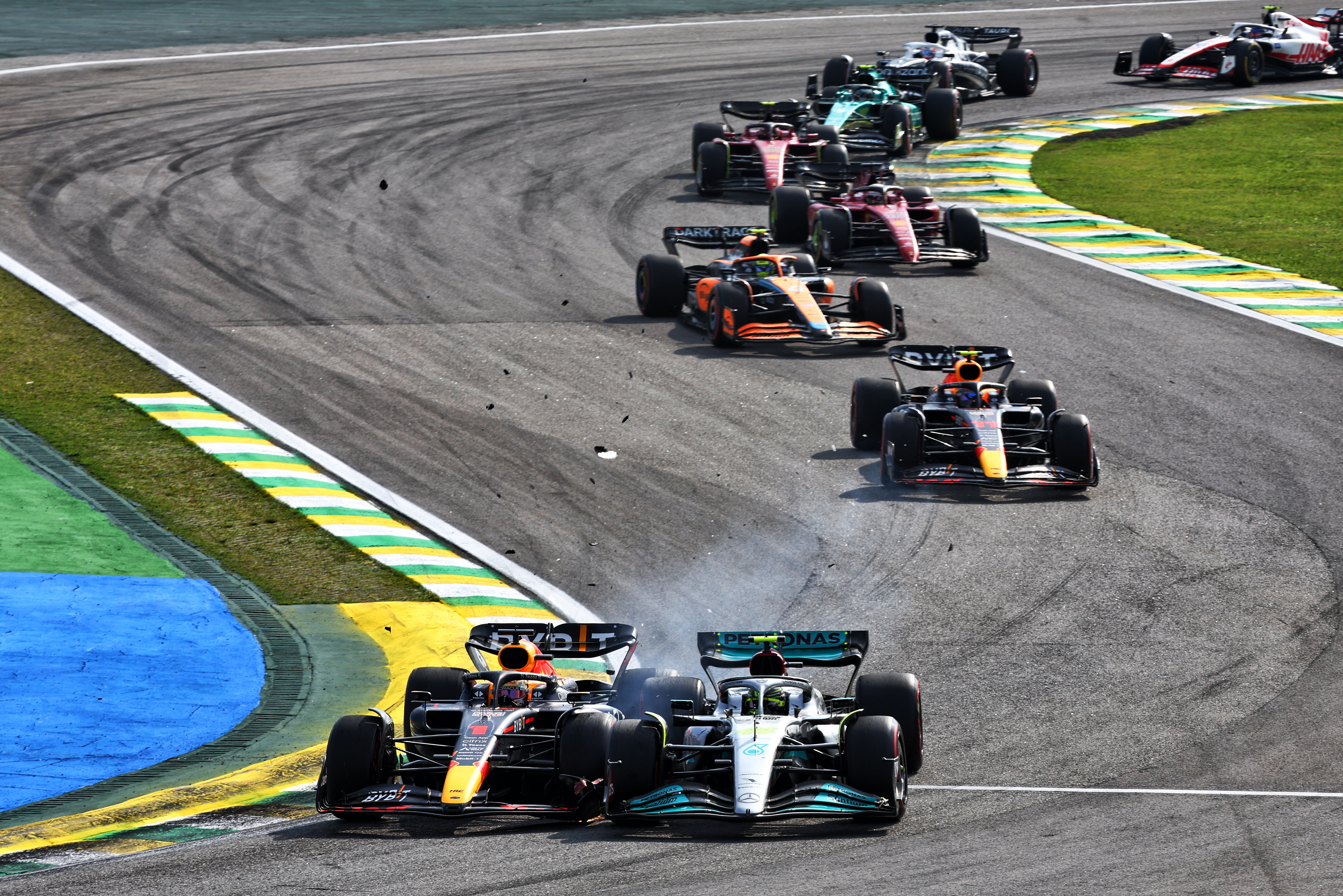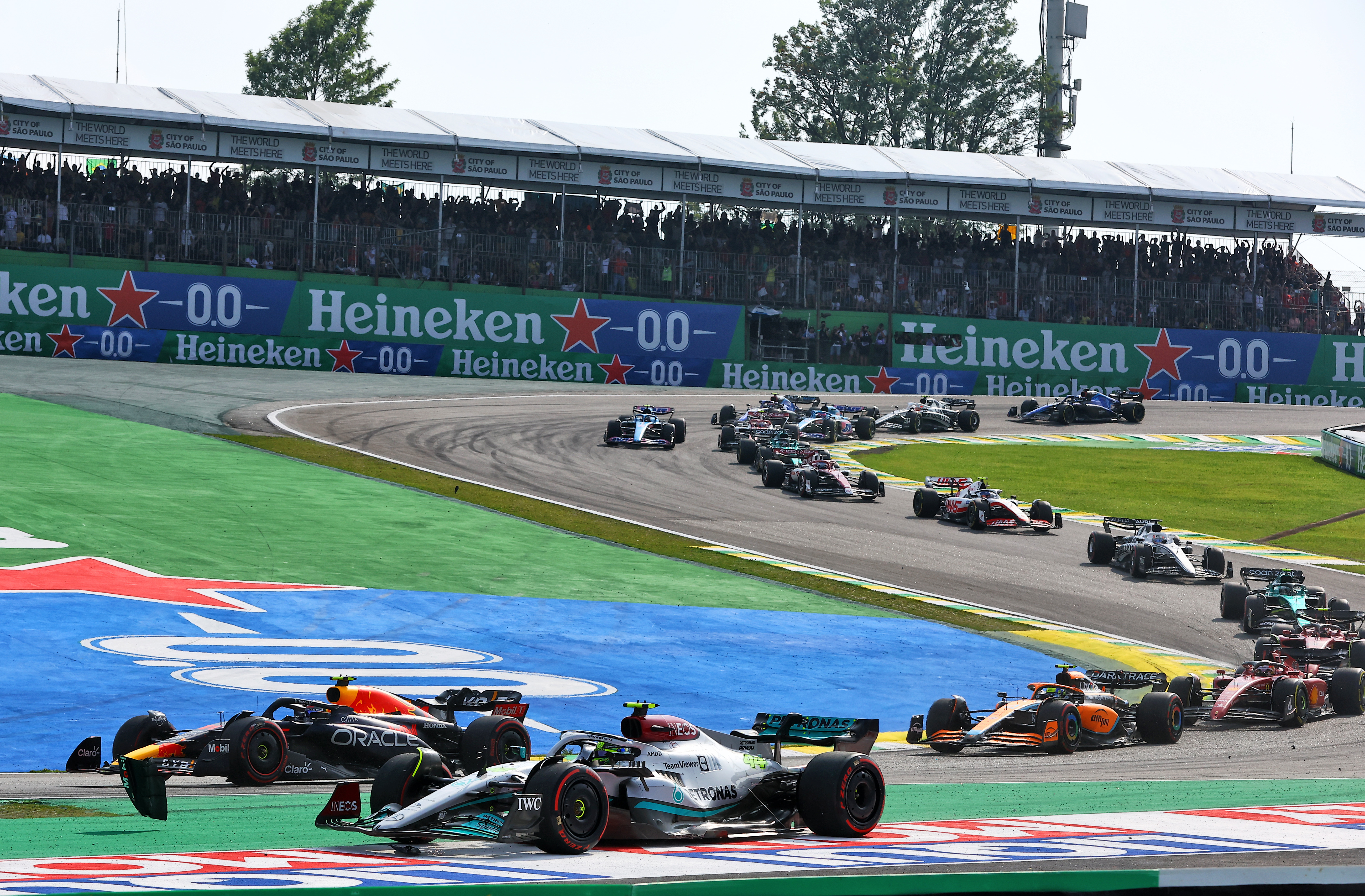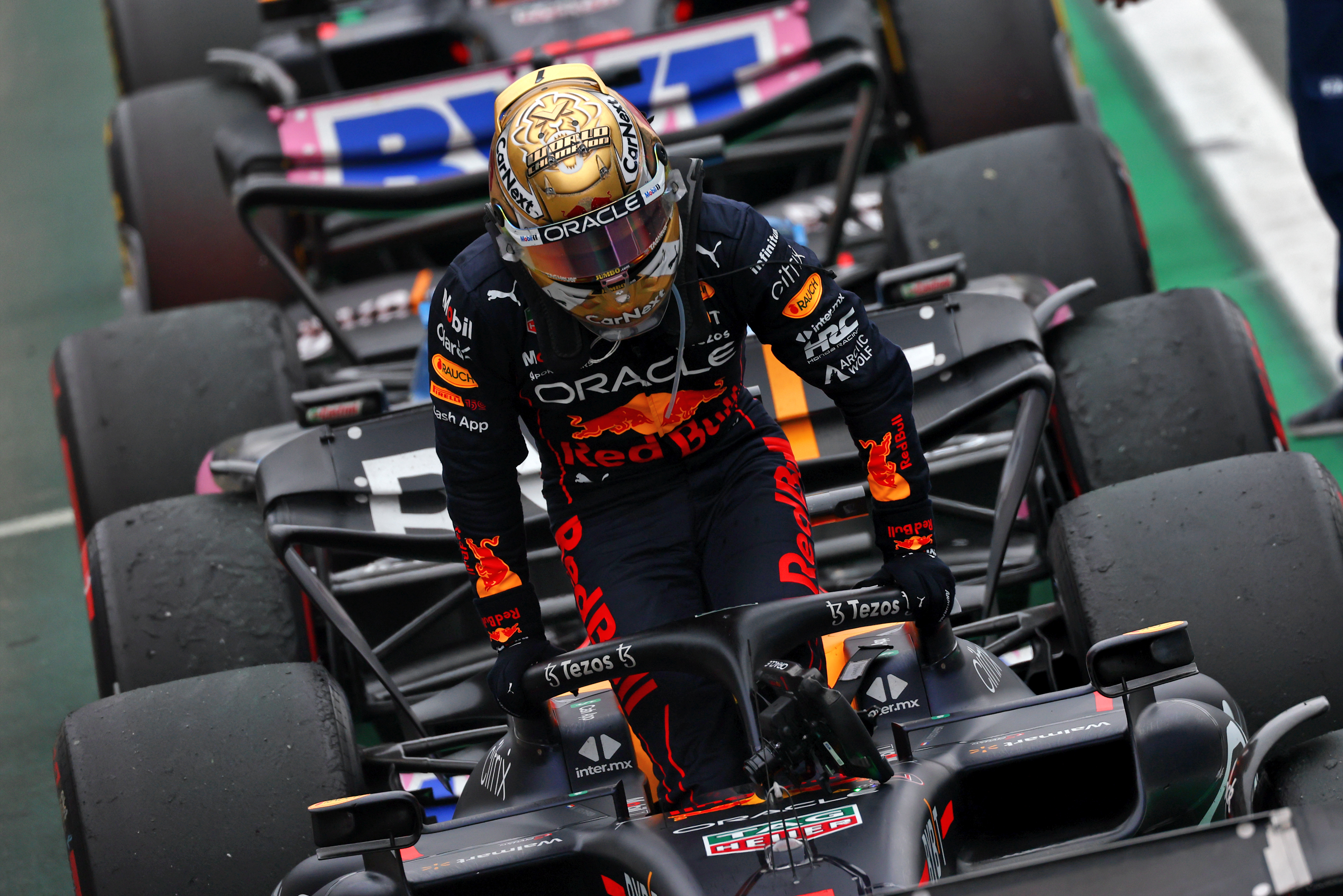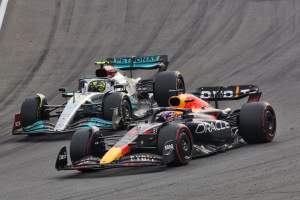Up Next

After such a contentious 2021 Formula 1 season, a collision between Lewis Hamilton and Max Verstappen in this year’s Brazilian Grand Prix was an unwelcome sight.
It was a flashback to the worst moment of last year’s titanic tussle. But it was more than just a bad trip down memory lane. This put the spotlight on a current problem in F1 as well.
Ahead of this season, guidance was handed out to manage driving standards in F1, in no small part due to some of the collisions between Hamilton and Verstappen in 2021.
These guidelines covered overtaking on the inside and the outside of a corner. They are a nice idea in principle but something that can be deeply flawed in practice. And the Hamilton/Verstappen incident at Interlagos this year was a good example of that.
The Hamilton/Verstappen incident should be seen as one continuous move, through a corner layout that gives one car the inside for one corner and the other car the inside for the next.

But, in the case of so-called “S-bends” like this, the new-for-2022 guidelines “apply similarly for each corner”. So, because the stewards felt Verstappen never actually completed his initial pass, he had to follow the rules for overtaking on the outside into the first part then the rules for overtaking on the inside of the second part.
The guidelines state that a car overtaking on the inside must “have a significant portion of the car alongside” to be given space. And part of judging that is whether their front tyres are alongside the other car by “no later than the apex of the corner”.
But “alongside” is a vague term. As Verstappen put it: “The rules are honestly so confusing how far you need to be alongside, what they are judging to be alongside.”
Given Verstappen was penalised, this may only mean the overtaking car’s front wheels must be specifically alongside the other car’s front wheels at the apex.
That would be consistent with Verstappen being judged predominantly to blame for the collision, because his front wheels were clearly alongside the rest of Hamilton’s car – just not quite level with it. In the past, this would have been more than enough to merit space being left on the inside.
Frustratingly, the stewards didn’t adequately explain this in their verdict. But anyway, if the stewards determined that Verstappen was not fully alongside, that means Hamilton wasn’t entitled to give more space regardless of what he could or should have done (and it’s worth remembering the stewards did note that Hamilton could have left more room at the apex).

There is another element to consider though. The guidelines stress that an overtaking manoeuvre “must be done in a safe and controlled manner, while enabling the car to clearly remain within the limits of the track”.
It’s questionable that Verstappen did this, given he had a compromised entry into Turn 2 and had not scrubbed off as much speed as you might usually expect a car on that line to do.
The fact Verstappen left the track after colliding with Hamilton may also be significant although the stewards would also probably take into consideration the fact that the contact did alter Verstappen’s trajectory, so this part isn’t quite as clear cut as, say, Turn 4 last year when Verstappen went miles off the track having clearly taken way too much speed into the corner.
The point is, there are a few things to take into account – Verstappen’s position alongside Hamilton, his entry speed into Turn 2 potentially making it not “safe and controlled”, and the fact he didn’t stay on track. It’s possible Verstappen fell foul of any one or all three of these, and that’s why he was deemed “predominantly at fault”.
The way the rules are written, a Verstappen penalty is justified. Did they have to punish him? That might depend on whether you think blame always needs to be apportioned and action always needs to be taken. Sometimes things are just racing incidents with a bit of blame on either side – for instance, even if Verstappen tried to back out of it, Hamilton’s own line means they could still have made contact, maybe Verstappen’s front left to Hamilton’s right rear.
Maybe the only way to tackle these kinds of incidents is to be as strict as possible and apply more and more penalties to stamp out bad driving. But the fact Verstappen says he would do the same thing again means he isn’t going to listen. In that case, he’ll risk picking up penalties unless the rules change.
What is a shame, whether it’s because drivers refuse to learn or because we have rules that have migrated towards prioritising blame and punishment, is that we have guidelines that are slightly ill-suited to the multi-dimensional situation of a wheel-to-wheel battle.
In judging these incidents, of course, the stewards can make each decision with their own discretion. The guidelines are called guidelines for a reason. They aren’t meant to set a one-size-fits all rule for every scenario. But they do nudge F1 in the direction of binary decision making – this car’s to blame, or this car’s to blame.

Ideally, all drivers need to be aware of when racing one another are two simple things: pinch a car too tight and you run the risk of being hit; pile in on the inside into a narrow gap and you run the risk of hitting the other car. And then just try to drive as reasonably as possible within that.
Of course, it isn’t that simple. And where Verstappen and Hamilton are concerned, reason seems to go out the window.
Verstappen is a very aggressive racer, and seems particularly so with Hamilton. Hamilton tends to err on the side of caution but we have seen that sometimes he stops moving aside when he thinks Verstappen is in the wrong.
While this could be a very specific rivalry, the driving standards guidelines might not be helping either. Because drivers are encouraged to race with a different perspective: get fully alongside at the apex (regardless of how you get there) and presumably you’re entitled to space; get even marginally ahead on the outside and presumably you can do what you want to the car at the apex.
It shifts the emphasis from ‘how do I get through this corner sensibly’ to ‘how do I claim this corner as mine’. That plays to the extremity we saw in Brazil, where Verstappen was demanding space on the inside and Hamilton felt he wasn’t obliged to leave much.
And it probably erodes a crucial grey area that is usually needed in the reality of a wheel-to-wheel contest, in which both drivers accept a degree of responsibility to avoid contact.






